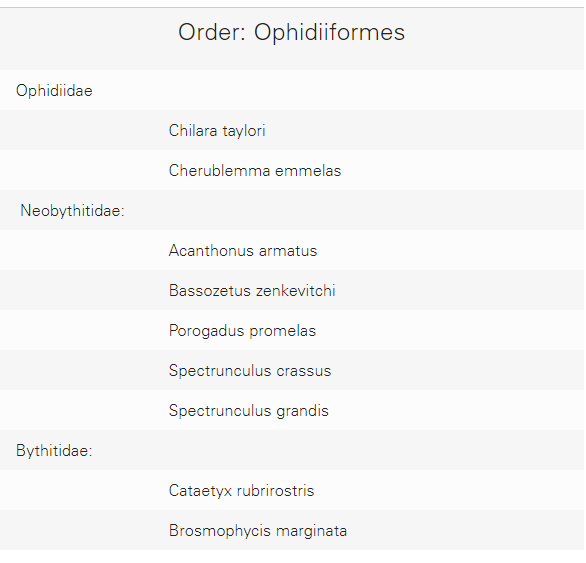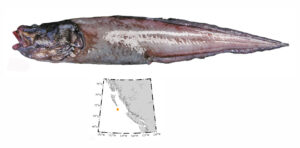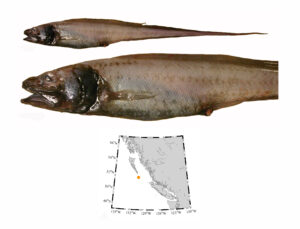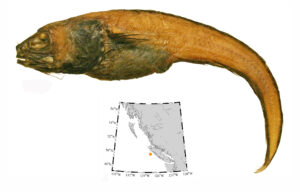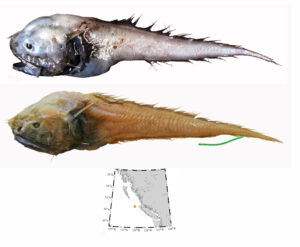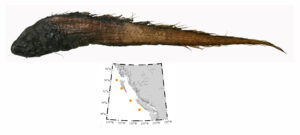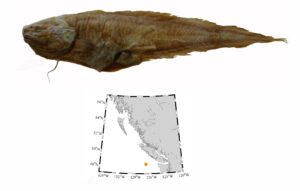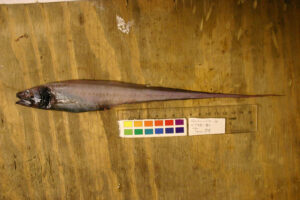Cusk-eels and brotulas of British Columbia have been poorly studied, and until recently, only two species were known from our waters – Spectrunculus grandis and Brosmophycis marginata. However, deep-sea survey samples from 2002-2006, and the commercial fishery provided six new species, with a seventh revealed during re-examination of museum specimens.
One specimen of Cherublemma emmelas was identified from commercial fishery bycatch in July 2006. It was in a trawl haul from 1097 m in Kyuquot Canyon, west of Vancouver Island, and extends the species’ range roughly 2890 km into British Columbia.
Shrimp survey samples, and the commercial fishery in the southern Strait of Georgia, British Columbia revealed an additional cusk-eel species (Chilara taylori) at depths of 78 to 109 m. These two fishes have since been joined by others added to the collection, and represent a modest extension of the species’ range north of Willapa Bay, Washington.
A single specimen of Acanthonus armatus was taken during deep-sea research collections from near Triangle Island at 1778 m and is the first record for the eastern North Pacific Ocean as well as Canada. The announcement of this fish’s presence here netted some unexpected attention because of its common name, the Bony-eared Assfish. The rest of the new cusk eels failed to draw the same level of attention.
Four specimens of Bassozetus zenkevitchi were collected from depths of 1909 to 2125 m west of Vancouver and Graham islands, show the species ranges along our entire coast. It is likely that others were caught years ago, but were mistakenly identified as Arrowtail, Melanonus zugmayeri, and discarded.
A single specimen of Cataetyx rubrirostris taken from 2000 m, roughly 18 km east of the Tuzo Wilson Seamounts in Queen Charlotte Sound, represents the first record in British Columbia and a 750 km northward extension from the previous known occurrence west of Nehalem Bank, Oregon. And as of January 2020, only one specimen of Porogadus promelas is known from BC waters, taken roughly 22 km east of the Tuzo Wilson Seamounts in Queen Charlotte Sound. This fish extends the species’ range into the eastern North Pacific, and also represents the northern-most record of the genus in the Pacific Ocean. The genus Porogadus presently is being revised, and since the RBCM specimen is in such good shape, it is being studied by experts in Copenhagen
During the preparation of the manuscript detailing these new records, I re-examined cusk eels in the Royal BC Museum collection. In the process, a single specimen of Spectrunculus crassus was identified from among the few S. grandis preserved at the Museum. Spectrunculus crassus had been split from S. grandis in 2008, and to date, is the most recent addition to our cusk-eel diversity.
Because of increased sampling effort since 1999 and re-examination of museum specimens, we now know that 9 species of cusk-eel live in our region.
